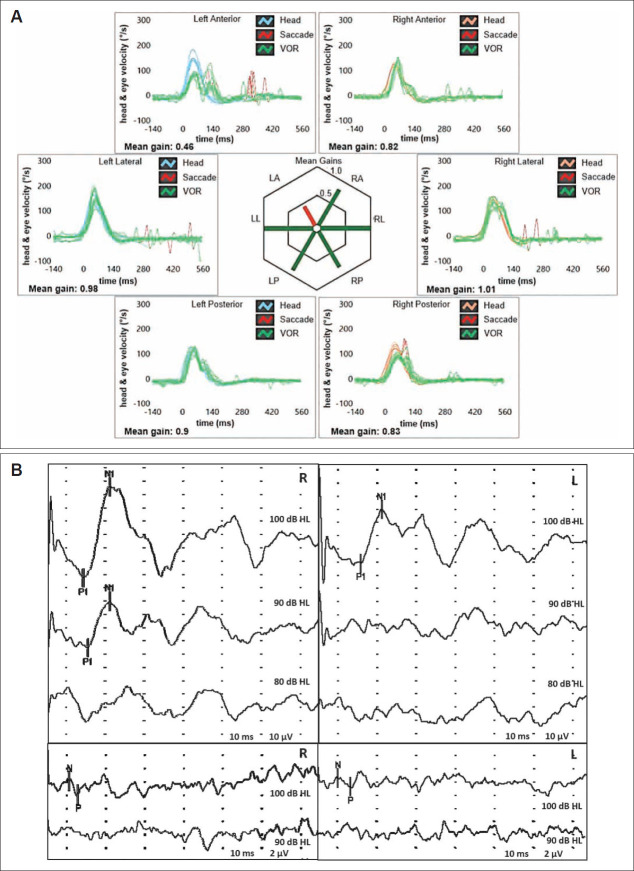Fig. 1.
Patient's vestibular assessment at presentation. A: Video-HIT performed using the ICS Impulse device (Otometrics, Natus Medical Inc, Taastrup, Denmark) assessing the VOR-gain (eye velocity/head velocity) for all six semicircular canals. Mean value of VOR-gain is reported for each canal. Gain values are considered normal if >0.8 for lateral canals and >0.7 for vertical canals. A selective reduction for the VOR-gain of the left ASC (0.46) with both overt and covert saccades could be observed. B: Cervical (above) and ocularVEMPs (below) for air-conducted sounds recorded using a 2-channel evoked potential acquisition system (Viking, Nicolet EDX, CareFusion, Heidelberg, Germany). Potentials were recorded delivering tone bursts (frequency: 500 Hz, duration: 8 ms, stimulation rate 5 Hz) via headphones. VEMPs testing revealed slightly asymmetrical amplitudes for both cervical (R: 69.2 µV and L: 41.4 µV at 100 dB HL stimuli) and ocular-VEMPs (R: 2.2 µV and L: 1.5 µV for 100 dB HL sounds) with an asymmetry ratio within normality ranges for both measurements (25% and 19%, respectively). ASC, anterior semicircular canal; HIT, head impulse test; L, left; LA, left anterior; LL, left lateral; LP, left posterior; R, right; RA, right anterior; RL, right lateral; RP, right posterior; VEMPs, vestibular-evoked myogenic potentials; VOR, vestibulo-ocular reflex.

